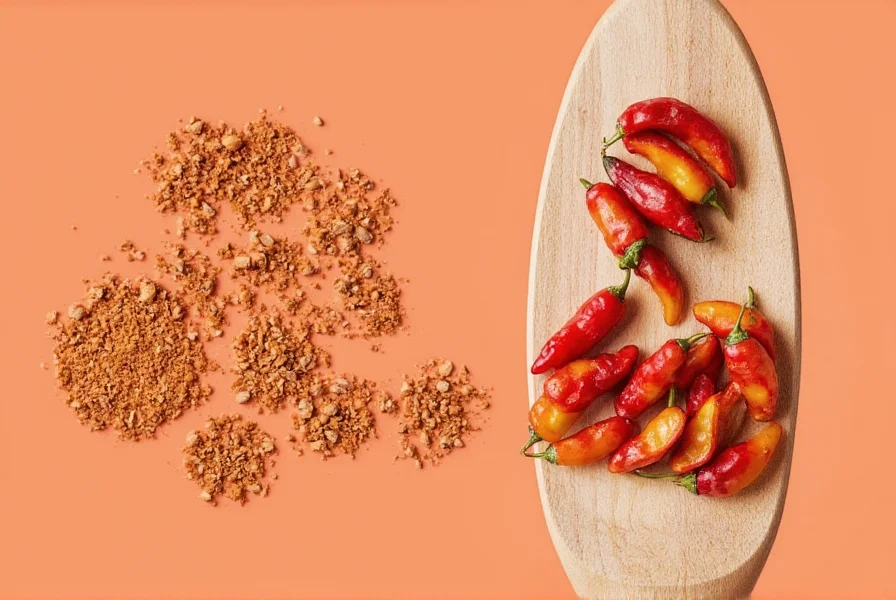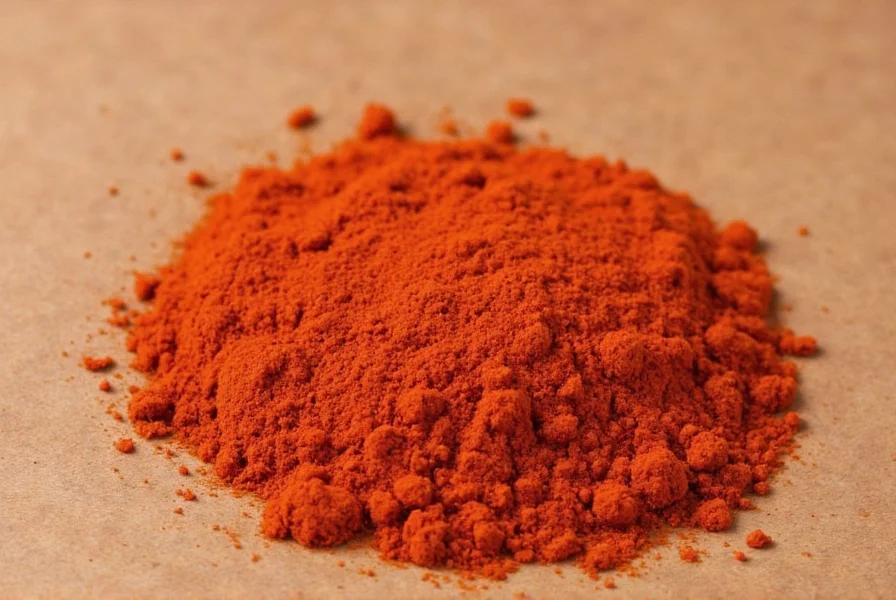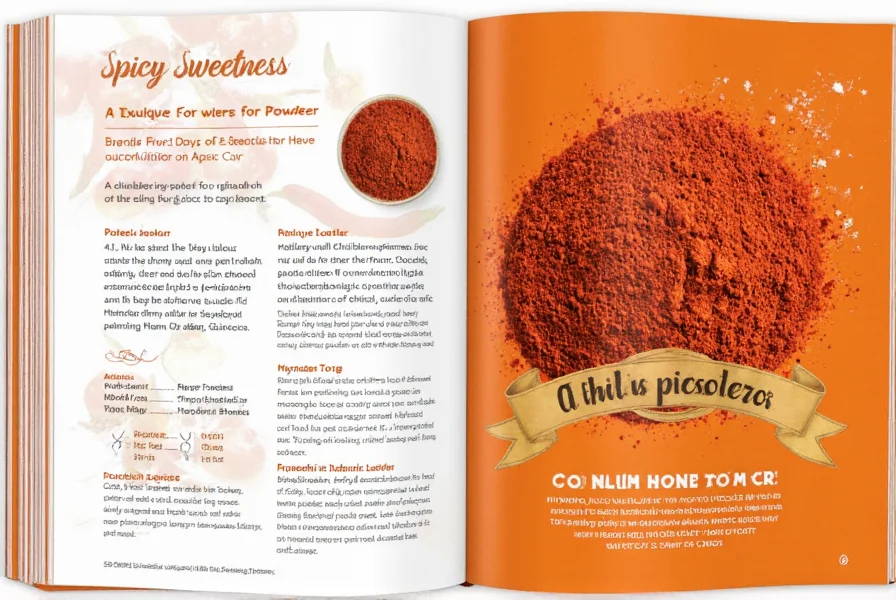Spicy Sweetness: A Chili Powder for Fruit Guide That Will Make Your Taste Buds Dance
Table of Contents
- Introduction to Chili Powder for Fruit
- Why Chili Powder Works with Fruit
- Practical Tips for Using Chili Powder with Fruit
- Best Chili Powders for Fruity Creations
- Buying Guide: How to Choose the Right Chili Powder for Fruit
- Conclusion
Introduction to Chili Powder for Fruit
When you think about chili powder, your mind probably jumps to spicy tacos, fiery curries, or smoky chili con carne. But here's a little secret: chili powder can be an amazing addition to sweet, fruity dishes too! It’s time to break free from the spice stereotype and explore how chili powder for fruit can elevate your cooking in unexpected ways.

From zesty mango salsa to tangy pineapple glaze, chili powder adds a unique kick that complements the natural sweetness of fruits. In this article, we’ll dive into why chili powder works so well with fruit, share some practical tips for using it, and help you find the best chili powders for your next fruity adventure.
Why Chili Powder Works with Fruit
At first glance, it might seem odd to pair something spicy with something sweet, but there’s a science behind this combination. Chili powder contains capsaicin, the compound responsible for the heat, which enhances the perception of sweetness. This means that when you add a touch of chili powder to a fruit dish, it actually makes the fruit taste sweeter and more vibrant.
Additionally, chili powder has a complex flavor profile that includes smokiness, earthiness, and a hint of bitterness—all of which can balance out the sweetness of fruits like mango, pineapple, and even apples. It’s a flavor contrast that surprises and delights the palate.
Some people even use chili powder as a finishing spice for desserts. Think of a chili-spiced apple pie or a cinnamon-chili glazed peach tart. These combinations may sound unusual, but they’re gaining popularity among adventurous food lovers.
Practical Tips for Using Chili Powder with Fruit
Now that you know why chili powder pairs so well with fruit, let’s talk about how to use it effectively. Here are some practical tips to get you started:
- Start Small: Chili powder is potent, so it’s best to start with a small amount—like a pinch or two—and adjust to taste. You can always add more, but you can’t take it away once it’s in.
- Use Freshly Ground Chili Powder: Pre-made chili powders can lose their potency over time. If possible, grind your own chilies at home for the freshest flavor.
- Pair with Tart or Acidic Fruits: Fruits like citrus, berries, and green apples work particularly well with chili because the acidity helps cut through the heat and brings out the flavors.
- Try Different Heat Levels: Some chili powders are mild, while others are super hot. Experiment with different types to find the one that suits your taste.
- Balance with Sweetness: To prevent the chili from overpowering the fruit, pair it with something naturally sweet, like honey, maple syrup, or caramel.
One popular way to use chili powder with fruit is in salsas. Try making a mango or pineapple salsa with a dash of chili powder, lime juice, and cilantro. It’s perfect for summer parties or as a topping for grilled fish or chicken.

You can also make a chili-infused fruit compote by adding a bit of chili powder to cooked fruit like apples, pears, or figs. The result is a rich, flavorful sauce that pairs beautifully with yogurt, oatmeal, or even ice cream.
Best Chili Powders for Fruity Creations
Not all chili powders are created equal. When choosing a chili powder for fruit, look for one that has a balanced flavor without being overly spicy. Here are a few top picks:
| Chili Powder | Heat Level | Flavor Profile | Best For |
|---|---|---|---|
| Mexi-Mix Chile Powder | Mild | Smoky, slightly sweet | Fruit salsas, glazes, desserts |
| Cayenne Pepper (Ground) | Medium | Hot, sharp | Spicy fruit sauces, marinades |
| Ancho Chile Powder | Mild to Medium | Earthy, sweet, smoky | Fruit compotes, roasted vegetables |
| Paprika (Sweet or Smoked) | Mild | Smoky, sweet | Grilled fruits, charred vegetable dishes |

For those who want to experiment, consider making your own chili powder blend. Start with dried chilies like ancho, guajillo, or pasilla, then grind them with a bit of salt and cumin. This gives you full control over the flavor and heat level, making it perfect for fruit recipes.
Buying Guide: How to Choose the Right Chili Powder for Fruit
If you're new to chili powder for fruit, it can be overwhelming to choose the right one. Here’s a detailed buying guide to help you make the best decision:
Features to Look For
- Origin: Chili powders from Mexico, India, or the Middle East often have distinct flavor profiles that can enhance fruit dishes.
- Ingredients: Check the label. Some chili powders include additional spices like cumin, garlic, or oregano. These can add depth but may not be ideal for delicate fruit dishes.
- Heat Level: As mentioned earlier, mild or medium heat is usually best for fruit. However, if you like bold flavors, go for a hotter variety.
- Freshness: Always buy from a reputable source and check the expiration date. Fresh chili powder has a more vibrant flavor.
Advantages of Each Type
- Mexican-Style Chili Powder: Offers a balanced mix of smokiness and spice, ideal for fruit-based salsas and sauces.
- Indian Garam Masala: Though not strictly chili powder, this spice blend includes chili and other warming spices that can work well with sweet fruits.
- Smoked Paprika: Adds a deep, smoky flavor that pairs nicely with grilled or roasted fruits.
Use Cases and Target Audience
Chili powder for fruit is perfect for:
- Home cooks looking to experiment with new flavors
- Chefs wanting to create unique dessert or appetizer options
- Food bloggers or content creators looking for fresh, trending ideas
- Anyone with a love for bold, contrasting flavors
Suitable Occasions
Whether it’s a summer barbecue, a festive holiday dinner, or a casual snack time, chili powder for fruit can add a surprising twist. Consider using it in:
- Fruit salads with a spicy kick
- Glazed meats or seafood with a fruity twist
- Spicy fruit smoothies or cocktails
- Desserts like chili-spiced apples or chocolate-covered strawberries
Remember, the key is to use chili powder for fruit sparingly. It should complement, not overwhelm, the natural sweetness of the fruit.
Conclusion
In conclusion, chili powder for fruit is a fun and flavorful way to elevate your cooking. It adds a surprising layer of complexity that can turn simple fruit dishes into unforgettable experiences. Whether you're making a spicy mango salsa or a chili-infused fruit compote, the combination of sweet and spicy is sure to delight your taste buds.
So don’t be afraid to experiment with chili powder in your fruit recipes. With the right balance and a bit of creativity, you can unlock a whole new world of flavors. And remember, as the saying goes: “Life is like a chili pepper—it’s all about the heat and the sweetness.”










 浙公网安备
33010002000092号
浙公网安备
33010002000092号 浙B2-20120091-4
浙B2-20120091-4